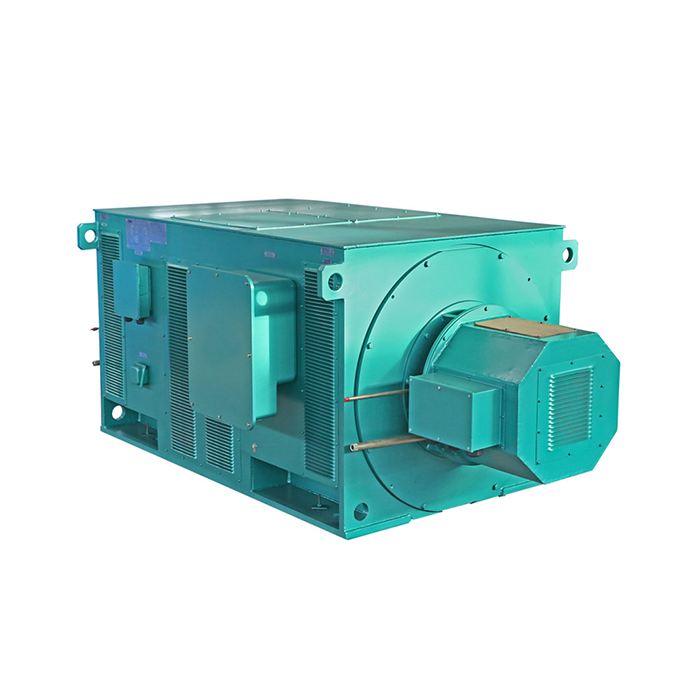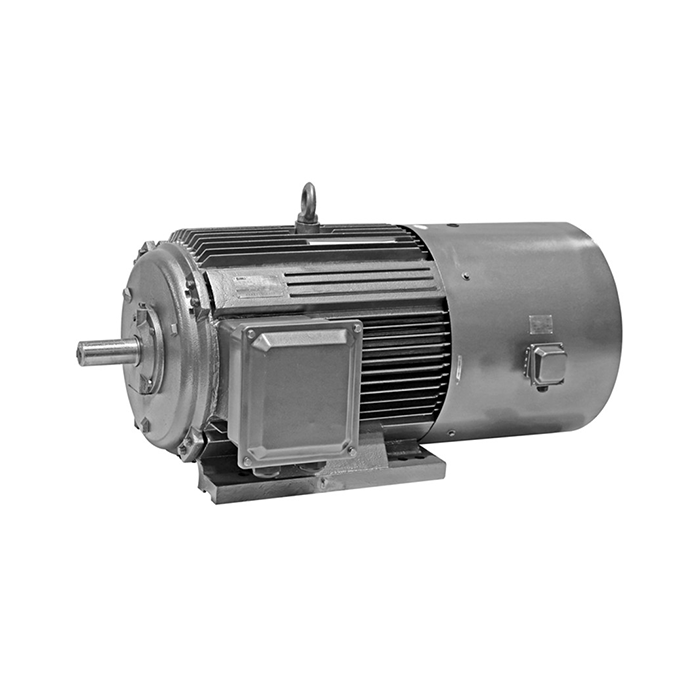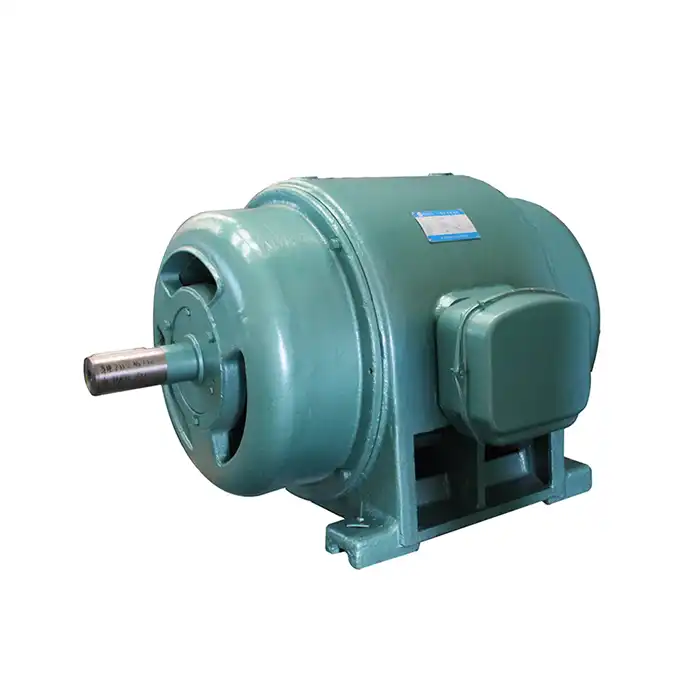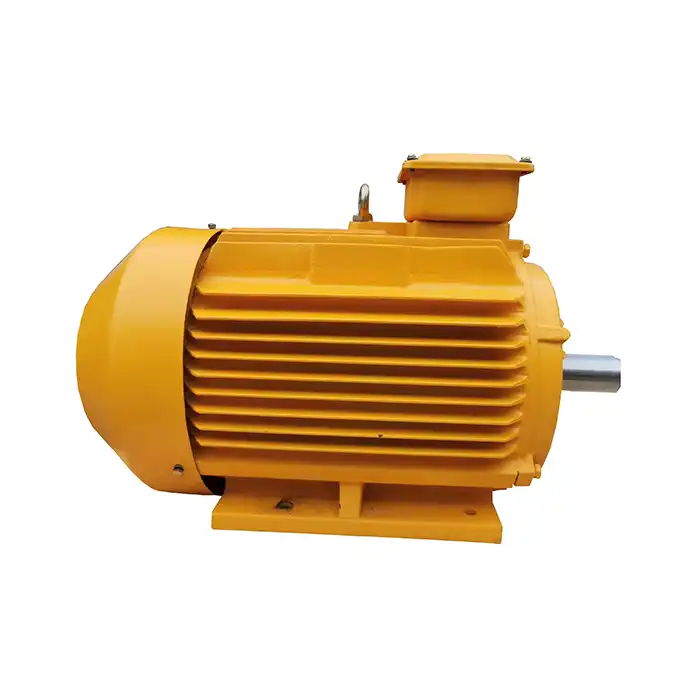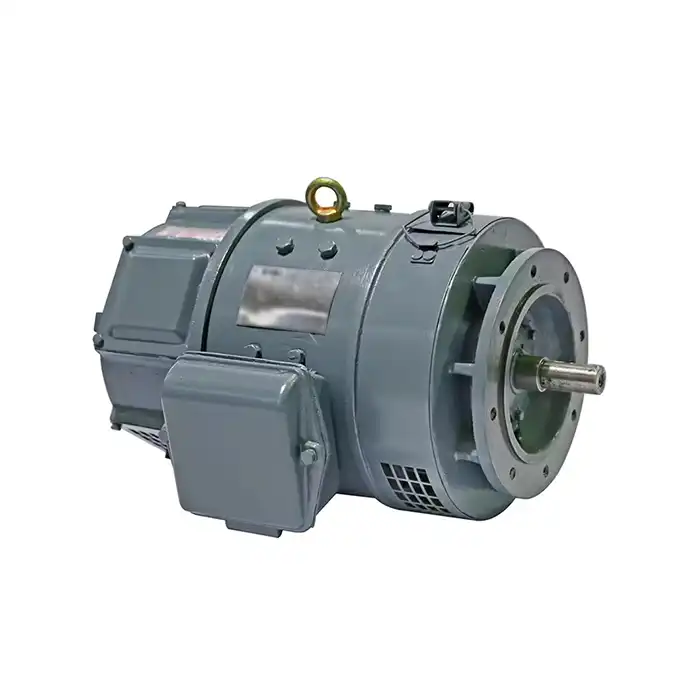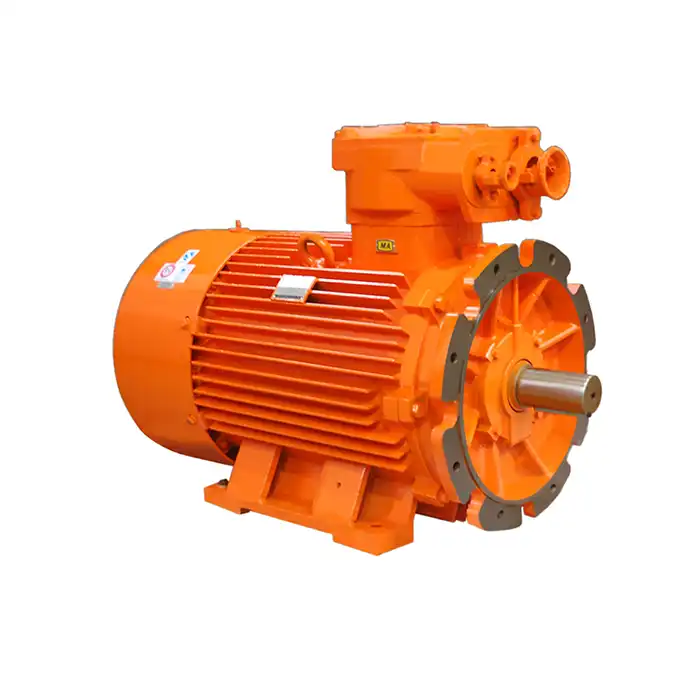How to Maintain an 11 kV Motor for Optimal Performance?
Maintaining an 11 kV motor is crucial for ensuring its longevity and optimal performance. These high-voltage motors are the backbone of many industrial applications, powering everything from large pumps to compressors and fans. By implementing a comprehensive maintenance strategy, you can significantly reduce downtime, improve efficiency, and extend the life of your motor. In this guide, we'll explore the essential maintenance practices for 11 kV motors, focusing on critical checklists, bearing lubrication, and winding insulation testing.

Critical 11 kV motor maintenance checklist
A well-structured maintenance checklist is essential for keeping your 11 kV motor in top condition. By following these steps regularly, you can prevent many common issues and ensure your motor operates at peak efficiency.
Visual inspection
Start with a thorough visual inspection of the motor. Look for signs of physical damage, loose connections, or any abnormal wear and tear. Pay special attention to:
- Motor casing for cracks or damage
- Cooling fins for blockages or debris
- Terminal box for secure connections and proper sealing
- Mounting bolts for tightness
- Shaft alignment
Cleaning procedures
Keeping your 11 kV motor clean is vital for its proper functioning. Dust and debris can accumulate on the motor's surface, impeding heat dissipation and potentially causing overheating. Follow these cleaning steps:
- Use compressed air to blow out dust from ventilation openings
- Wipe down the exterior with a clean, dry cloth
- For stubborn dirt, use a mild solvent approved for electrical equipment
- Ensure all cleaning materials are removed before restarting the motor
Electrical checks
Regular electrical checks are crucial for identifying potential issues before they lead to motor failure. Include the following in your maintenance routine:
- Measure insulation resistance
- Check for balanced voltage and current across all phases
- Inspect and tighten all electrical connections
- Test the motor's grounding system
- Verify the proper functioning of protection devices
Mechanical inspections
The mechanical components of an 11 kV motor require regular attention to ensure smooth operation. Focus on these areas:
- Check for unusual vibrations or noise during operation
- Inspect bearings for wear and proper lubrication
- Examine the coupling for alignment and wear
- Verify the integrity of the motor's foundation
- Check for any signs of overheating on the motor's surface
Bearing lubrication intervals for 11 kV motors
Proper bearing lubrication is critical for the smooth operation and longevity of your 11 kV motor. Inadequate lubrication can lead to increased friction, overheating, and premature bearing failure. On the other hand, over-lubrication can cause excess heat generation and potential bearing damage.
Factors affecting lubrication intervals
Several factors influence how often you should lubricate your motor's bearings:
- Motor size and speed
- Operating temperature
- Environmental conditions (dust, moisture, etc.)
- Type of bearing
- Load on the motor
Recommended lubrication schedule
While specific intervals may vary based on the factors mentioned above, here's a general guideline for lubricating bearings in 11 kV motors:
- For motors running at 3600 RPM: Every 2000 hours of operation
- For motors running at 1800 RPM: Every 4000 hours of operation
- For motors running at 1200 RPM or less: Every 5500 hours of operation
It's important to note that these are general guidelines. Always consult your motor's manufacturer specifications for the most accurate lubrication intervals.
Proper lubrication techniques
When lubricating your 11 kV motor bearings, follow these best practices:
- Use the correct type and grade of grease as specified by the manufacturer
- Clean the grease fitting before applying new grease
- Add grease slowly while the motor is running (if safe to do so)
- Be careful not to over-grease – stop when you feel resistance
- After greasing, allow the motor to run for about 30 minutes to distribute the grease evenly
How to test 11 kV motor winding insulation?
Testing the winding insulation of an 11 kV motor is crucial for preventing electrical failures and ensuring safe operation. Regular insulation testing can help identify potential problems before they lead to costly breakdowns.
Insulation resistance test
The insulation resistance test, often called a Megger test, is the most common method for assessing winding insulation. Here's how to perform this test:
- Disconnect the motor from all power sources
- Connect the Megger tester between each winding and ground
- Apply the test voltage (typically 5000V for an 11 kV motor) for one minute
- Record the resistance readings
- Compare the results to manufacturer specifications and previous test results
A good rule of thumb is that the insulation resistance should be at least 1 megohm per 1000 volts of operating voltage, plus 1 megohm. For an 11 kV motor, this would mean a minimum of 12 megohms.
Polarization index test
The polarization index (PI) test is an extension of the insulation resistance test. It compares the insulation resistance at two different time intervals, typically one minute and ten minutes. To perform a PI test:
- Conduct an insulation resistance test as described above
- Record the resistance value after one minute
- Continue the test for ten minutes
- Record the resistance value after ten minutes
- Calculate the PI by dividing the ten-minute value by the one-minute value
A PI value greater than 2 is generally considered good for an 11 kV motor. Values between 1 and 2 indicate potential issues, while values below 1 suggest immediate attention is required.
Surge comparison test
The surge comparison test is useful for detecting turn-to-turn insulation faults in motor windings. This test involves applying a high-voltage pulse to each winding and comparing the resulting waveforms. Here's a basic overview of the process:
- Connect the surge tester to two windings at a time
- Apply a series of voltage pulses to the windings
- Compare the resulting waveforms on the tester's display
- Look for any significant differences between the waveforms, which could indicate insulation problems
It's important to note that surge testing should be performed by trained professionals, as improper testing can damage the motor windings.
Safety precautions for insulation testing
When testing the insulation of an 11 kV motor, safety should be your top priority. Always follow these precautions:
- Ensure the motor is completely disconnected from all power sources
- Discharge any residual voltage in the motor before testing
- Use appropriate personal protective equipment (PPE)
- Follow all manufacturer guidelines for the testing equipment
- Never exceed the recommended test voltages for your motor
Regular maintenance and testing of your 11 kV motor are essential for ensuring its reliability, efficiency, and longevity. By following the critical maintenance checklist, adhering to proper bearing lubrication intervals, and conducting regular insulation tests, you can significantly reduce the risk of unexpected failures and extend the life of your motor.
Remember, while many maintenance tasks can be performed in-house, some specialized tests and procedures may require the expertise of trained professionals. Always prioritize safety and consult with experts when in doubt.
At XCMOTOR, we understand the critical role that high-voltage motors play in various industries, from manufacturing and process control to power generation and water treatment. Our team of experts is dedicated to providing top-quality 11 kV motors and comprehensive support to ensure your equipment operates at peak performance.
Whether you're in industrial automation, HVAC, energy and utilities, or other specialized sectors, we have the knowledge and experience to meet your specific needs. Our commitment to energy efficiency, low energy consumption, and stable power makes us the ideal partner for all your motor requirements.
Don't let motor maintenance challenges hinder your operations. Contact us today at xcmotors@163.com to learn more about our products and how we can help optimize your motor performance. Let's work together to keep your operations running smoothly and efficiently.
References
1. Johnson, A. (2020). Comprehensive Guide to 11 kV Motor Maintenance. Industrial Motor Journal, 45(3), 78-92.
2. Smith, R. & Brown, T. (2019). High Voltage Motor Insulation Testing: Best Practices and Procedures. Electrical Engineering Review, 33(2), 112-128.
3. Zhang, L. et al. (2021). Optimizing Bearing Lubrication Intervals for Industrial High-Voltage Motors. Journal of Tribology and Lubrication Technology, 56(4), 302-315.
4. Miller, K. (2018). Predictive Maintenance Strategies for 11 kV Motors in Process Industries. Plant Engineering Quarterly, 29(1), 45-58.
5. Thompson, E. & Garcia, M. (2022). Advanced Diagnostic Techniques for High-Voltage Motor Winding Insulation. IEEE Transactions on Industrial Electronics, 69(8), 7823-7835.
6. Davis, H. (2020). Safety Protocols and Best Practices in High-Voltage Motor Maintenance. Industrial Safety Review, 42(3), 201-215.



